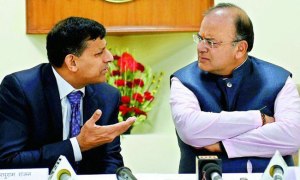Mutual funds, over the last several years,have turned out to be a very popular mode of investing for thousands of small and retail investors in India. And there are reasons for such popularity and the key reason being even the smallest of small investors can participate in the equity markets through the route of mutual funds without no or little knowledge about the equity markets.
That said, while investing in the funds, investors always end up in a situation finding it difficult to choose the right option be it growth or dividend option in a mutual fund. In this perspective, its becomes relevant to understand the difference between the growth and the dividend options in a mutual fund, as taxation also plays a significant role.
What are dividend & growth options –
Investments made under the growth option will not generate periodic income, in the sense that all money invested will continue to be invested until redeemed – i.e. this will give you capital appreciation and hence returns, but not regular payouts. For example, if you purchased 1,000 units of a mutual fund at Rs. 11 and sold it a year later at Rs. 15, this difference of Rs. 4,000 (i.e. Rs. 15 – 11 = Rs. 4 * 1,000 units = Rs. 4,000) is your capital gain and returns on investment.
This type of investment is more suited for long term investing in equity mutual funds, as there are no taxes on long term capital gains. Also, equity mutual funds are prone to short term risk, but in the long term they typically give good returns. This option benefits from the power of compounding since not only is the principal invested, but also the notional profit. It is a good option for those who do not need to depend on a monthly income from their investments for their living.
Dividend Option
Unlike the growth option, investors opting for the dividend option will get a periodic payout in the form of dividend, though the periodicity is not certain. This option is ideal for short term to medium term investments, especially in debt and debt oriented funds. Debt mutual funds and Monthly Income plans (MIPs) are good choices for investors who require a steady monthly and periodical income.
This option will give the investor the benefit of moderate capital appreciation along with dividend returns over the period of holding. It is important to note that due to the payouts, the power of compounding is not as efficient as compared to that of the growth option. Also, investors who do not depend on the dividend income, will face the risk of re-investment, i.e. re-investing the money earned via dividend in an asset class which offers good return. It is important to keep in mind that dividends are neither fixed nor guaranteed and the payouts depend upon the fund’s performance during that period.
Dividend options also make a strong case for retail investors who may not know the direction of the equity markets. In case if they had invested in dividend option of an equity fund, fund based on good performance may declare dividends and to that extent the investor takes the money out of the fund and stays protected from the market’s downside. In case some one is invested in the growth option of equity fund, and if the market cracks down, the notional value of the fund goes down along with the fund’s performance.
Dividend re-investment option
This option tries to make the best of both worlds, in the form of declaring dividends to investors, but not issuing the dividends in the form of cash but re-investing the dividends into the same mutual fund for additional units. One faces the risk of having to pay an entry load each time a dividend is reinvested, and also if there is any lock in (as in the case of an ELSS), the new units will be subject to a further 3 year lock in. The growth option is a better bet than the dividend reinvestment option.
Taxation
Taxation on growth funds is simple, as only capital gains are calculated, and for equity funds there is no tax on long term capital gains, while for short term capital gains it is 15%. In the case of debt funds in the growth option, short term capital gains is taxed at 30% whereas Long term capital gains is taxed at 10% without indexation or 20% with indexation. However, in the case of dividend options, the dividend is tax free in the hands of the investor, but the fund will have to pay dividend distribution tax before it gives the dividend.
Performance difference between Growth & Dividend options:
Contrary to the perception of some investors about the performance difference in growth and dividend options, actually there is no difference in the performance of fund in terms of growth and dividend options. Both the options reflect the performance of the fund, the difference in the NAV is because when dividends are declared, the NAV of the fund drops to the extent of declared dividends. While the growth option remains the same, as there is no payout.
Summary:
- Dividend option aims to give periodic payouts, and these are tax free in the hands of the investors.
- Dividend option is suited for investors who seek regular returns in funds such as debt and monthly income plans.
- When equity markets are good, investors are better off by taking money out of equity funds through dividends.
- Growth option will not pay out any money in the interim; only on redemption will the investors receive the accrual in the fund through growth option.
- Those of the investors who do not need any periodic payouts, growth option is best suited for them.






